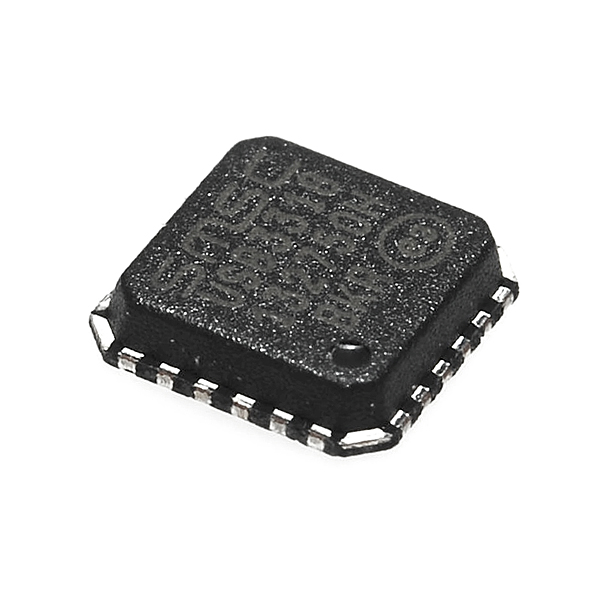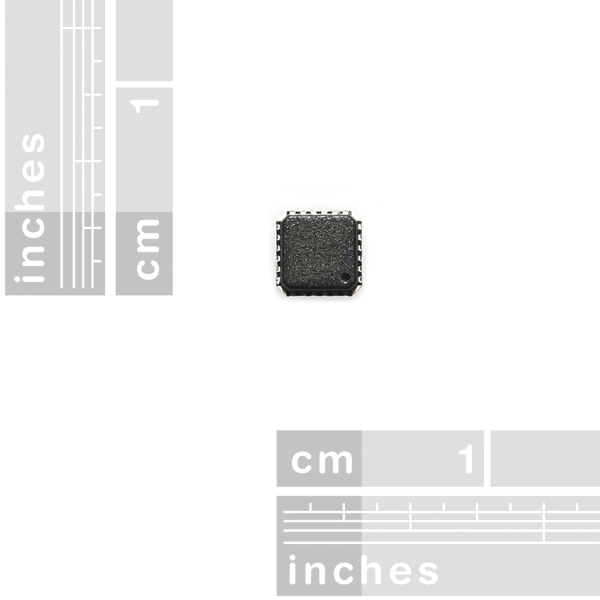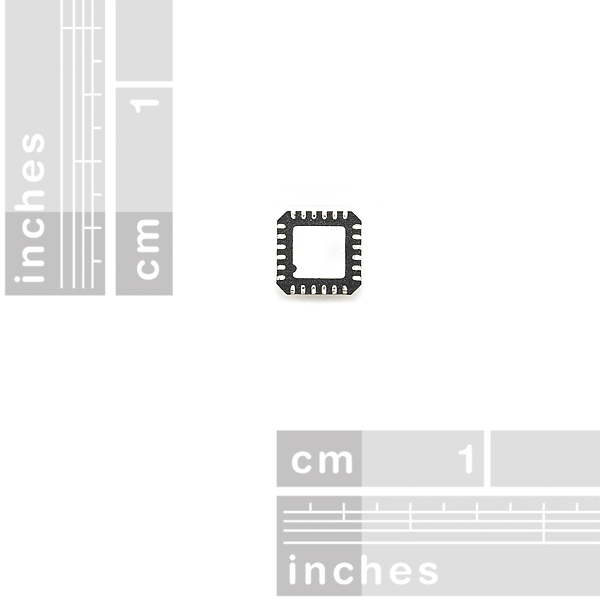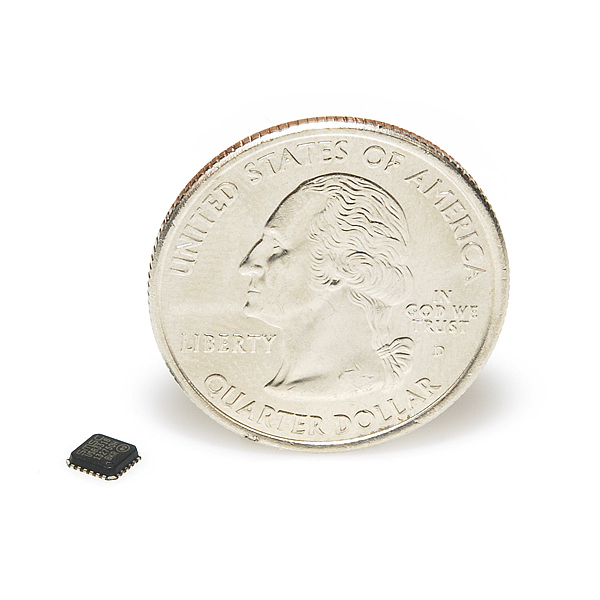×
SparkFun will be closed Nov. 28th and Nov. 29th in observance of Thanksgiving. Any orders qualifying for same day shipping placed after 2:00 p.m. MST on Wednesday, Nov 27th will be processed on Monday, Dec 1st. Wishing you a safe and happy holiday weekend from all of us at SparkFun!
USB2.0 Transceiver IC - USB3318
Replacement: None. We're no longer selling this IC. This page is for reference only.
The USB3318 is a high-speed USB 2.0 transceiver (PHY) that supports system architectures based on a 13MHz reference clock. The USB3318 is an extremely flexible chip which allows the USB connector to act as a single port of connection for high speed data transfer, battery charging and stereo/mono audio accessories.
The USB3318 uses the industry standard UTMI+ Low Pin Interface (ULPI) to connect the USB PHY to the Link. The ULPI interface uses a method of in-band signaling and status byte transfers between the Link and PHY, to facilitate a USB session. By using in-band signaling and status byte transfers the ULPI interface requires only 12 pins.
The chip includes an integrated 3.3V LDO regulator to generate its own supply from power applied at the VBAT pin. Voltage on the VBAT pin can range from 3.1 to 5.5V.
- USB-IF 'High-Speed' compliant to USB 2.0
- Interface compliant with the ULPI specification
- 1.8 to 3.3VDC IO Voltage
- Low current design
- Full support for On-The-Go (OTG) protocol
- Supports OTG Host Negotiation Protocol (HNP) and Session Request Protocol (SRP)
- Allows host to turn VBUS off to conserve battery power in OTG applications
- Support OTG monitoring of VBUS levels with internal comparators
- 13MHz Reference Clock Operation
- Integrated ESD protection circuits
- Integrated battery to 3.3V LDO regulator
- 4 x 4 x 0.90 mm (24-pin QFN package)
Comments
Looking for answers to technical questions?
We welcome your comments and suggestions below. However, if you are looking for solutions to technical questions please see our Technical Assistance page.
Customer Reviews
No reviews yet.





Works for TRAKTOR AUDIO 10??
Breakout board please!?!????
Does anyone know if the RESETB pin is pulled high/low or just floats? I'm trying to create a switch to turn this chip on or off without any CMOS devices.
Could this be used to, for example, send audio from a computer (wich is playing a song on Windows Media Player or other player)to speakers, like a really simple USB sound-card? If so, could it "work" with high bitrates (1411kbps), like FLAC files or with MP3 files that require about 120MHz of speed (Yes, I know that this chip does not decode the file)?
Thanks.
Yes it could be. You'd need to create a firmware for your device that conforms to the USB Audio Device class, add the requisite ADCs and DACs, and that's it. There's even room in the USB spec for handling formats other than pcm, so you can have your device handle mp3 decoding, for example.
Does anyone have any idea how fast this can really transfer? The documentation makes no real mention of what the maximum sustained transfer rate is, or any transfer rate for that matter....
Can I just say how Fired Up I am to finally come across a High-speed USB PHY?!?! This is great, and I am really excited to finally be able to create a High Speed USB Host for embedded video projects!
Can we have a break out board for the USB3318
Would this be the sort of chip that would allow one to, say, do USB-MIDI?
Bret, You could do USB-MIDI with this, but it might be overkill unless you need extremely low latency as this chip does the high speed (i.e. 480MHz) version of USB 2.0. For proper USB-MIDI you need to be able to do at least full speed USB. If you don't have experience with USB, a simpler starting point might be one of these: http://code.google.com/p/micropendous/ or one of these: http://www.pjrc.com/teensy/ combined with the firmware hosted here: http://www.fourwalledcubicle.com/LUFA.php
There's even a MIDI example included in the LUFA download.
Please forgive if this is an ignorant question, but here goes:
How does this IC achieve such high transfer rates with only a 13 MHz reference clock?
downloads the data sheet
Cool! Thanks for the advice.
Probably really not the chip you'd want to use for this. Unless I'm entirely mistaken, you need some kind of hardware-ish USB controller in order to make use of this USB PHY - most likely created using either an FPGA or one of the new XMOS processors.